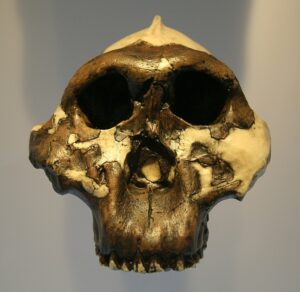
The Paranthropes
Paranthropus, sometimes called robust Australopithecus, comprises three species: Paranthropus aethiopicus, Paranthropus boisei and Paranthropus robustus. Their period of existence ranges from 2.98-2.87 to 1.3 million years.

Paranthropus, sometimes called robust Australopithecus, comprises three species: Paranthropus aethiopicus, Paranthropus boisei and Paranthropus robustus. Their period of existence ranges from 2.98-2.87 to 1.3 million years.

Ever since the emergence of prehistoric archaeology as a discipline, the question of dating artefacts and sites has arisen. Indeed, dating, whether absolute or relative, is absolutely essential in order to interpret data from the object discovered.

In this article, we’re going to take a look at animals that have now disappeared, and which are often grouped together under the rather broad term “Pleistocene Megafauna”.
In this section, we propose 3 summaries of scientific articles recently published on various subjects. This way, you can keep up to date with the latest news in the field! If you have any questions about the articles, don’t hesitate to ask us.
Chris O. Hunt et al, “Shanidar and his flowers? Reflections on the palynology of the Neanderthal ‘Flower Burial’ hypothesis”, Journal
Duane Hamacher, et al, “The archaeology of orality: Dating Tasmanian Aboriginal oral traditions to the Late Pleistocene”, Journal of Archaeological
Ina Reiche et al, “First discovery of charcoal-based prehistoric cave art in Dordogne”, Scientific reports, Nature, 22235 (2023). https://www.nature.com/articles/s41598-023-47652-1#:~:text=A%20large%20number%20of%20Carbon,cave%2C%20Dordogne%2C%20Southern%20France A
The purpose of this section is to familiarize you with certain personalities who have played an important role in the study of prehistory. These short bibliographic sheets are published in the course of our articles.
Subscribe to our newsletter
Copyright © Prehistory Travel – All rights reserved – By SLWD